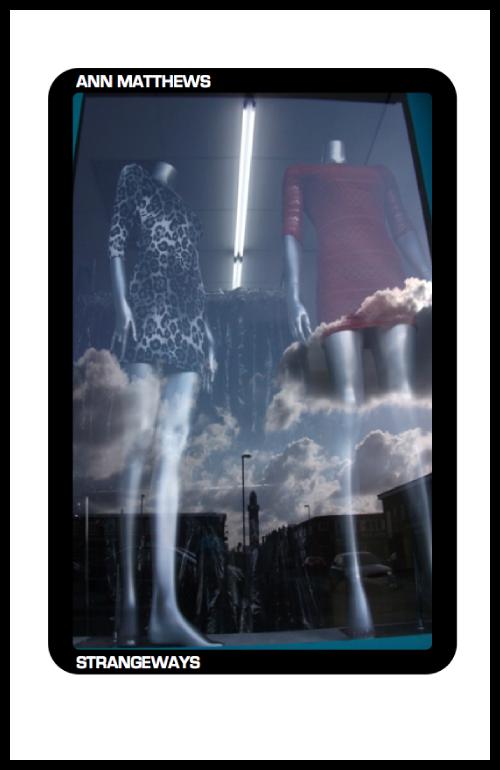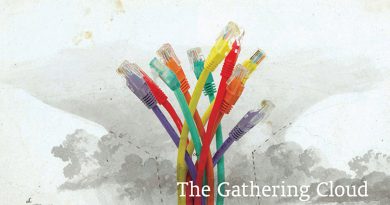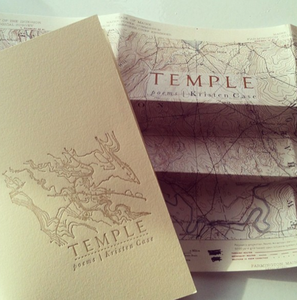‘The of of the film of The book and The of of the book of The film’ by Ryan Ormonde
-Reviewed by Rosie Breese–
As its title suggests, this pleasingly compact pamphlet from the Knives, Forks and Spoons Press begins with a discussion and questioning of different media/forms of the word – no mean feat when restricting oneself to print on paper. As with previous pamphlets from this innovative publisher, the result is wonderfully unpredictable; a wild ride through the poet’s wordplay-world and the questioning of meaning itself.
From the outset, Ormonde’s collection almost has the feel of an academic discussion, albeit an unorthodox one, carried out through a series of small blocks of text. Statement follows on from statement, quickly moving from the media suggested by the title:
“..in a future where film is (a)
memory We can still say
We do not need to put this
into words because before
now We had film”
..to an altogether more abstract discussion of the fundamentals of ‘saying’ – moving from different representations of reality to the realities of representation:
“ … Tongue will
make (a) new memory and
or technology will make (a)
New memory.”
Here, we witness Ormonde’s lightning-quick shifts from one idea to the next. He plays with the ideas of saying, recording, archiving and retrieval throughout the collection, putting them through endless permutations which surprise at every twist and turn.
This constant toying with what are, after all, fairly weighty concepts is, in places, perfectly balanced by a playfulness that is a delight to follow:
“Enterpriseis undertake.
Enterprising undertaking.
Enterprisers undertakers.
Enterprisen undertaken.
Enterprose undertook.
Exitprose overtook.
Exitprisen is overtaken.”
Here, Ormonde deliberately and mischieviously follows the patterns of morphological inflection within the two words, transferring these patterns from one word to another to take the words themselves to new frontiers of meaning. Meaning is pushed to its limit; there is no logical answer as to what comes next.
One particularly joyful moment was the discovery of the tiny footnote beneath the 43rd poem-block: “Here the text is infected.” This is the moment that the text begins to consciously comment on itself; on the process of production, archiving and retrieval of information through and beyond the word. The sequence deteriorates into the fugue it depicts, and encounters Psychiatry as a concept rather than a cure. There is a sense of dialogue, deep within the mind, between the shiftiness of meaning and the singularity of this concept:
“Psychiatry. a forgot.
Psychiatry. a forge.
Psychiatry. a fugue.
Psychiatry.”
Before the text is said to have ‘recovered’ from its virus (this fact again communicated by a footnote), the word ‘fugue’ itself is stripped down to pure sound, transcribed phonetically: “(fju:g). Restricted to print on paper, Ormonde inventively communicates the breakdown of a word, a concept, and its rebuilding from pure sound upwards.
If I was to pick something to criticise with regard to this collection, it would be that its many lines of enquiry into mutations and permutations make it difficult to detect an overall coherence behind the sequence (if it is to be read as a sequence, as its numbered text-blocks suggest). There is a sense that sometimes the wordplay is undertaken for its own sake rather than contributing to a structured whole:
“ ‘This is’ ‘nice’. ‘This is’ nice.
‘This’ ‘is nice’. ‘This’ ‘is’
‘nice’…”
Whilst this wordplay is interesting to read, the sheer volume of these diversions into the particulars of ‘saying’ make for hard going reading – especially where, as above, the focus is an utterance which is subjective in itself. I’m not suggesting that all poetry should be instantaneously digestible – after all, there is a joy in difficult texts; they make us think and question. But sharper editing of the collection as a whole could have made for a sequence that facilitates this thinking and questioning by giving the stronger pieces room to breathe, in isolation from their many possible variations.
Another question I had when reading this volume was the reasoning behind the form of the poems on the page. Whilst the justified blocks are visually stark and offer an interesting decontextualisation reminiscent of the wall of an art gallery, in places it’s difficult to see why the potential for experiment with spacing has not been exploited. That said, this sense of restriction is concurrent with the trammelling of meaning into the forms it must take on during the process of communication – through voice, film, or through words themselves.
Having googled Ryan Ormonde, it appears that he is also involved in performance art and work across different media, and this is something that is certainly hinted at throughout this collection. Thinking again of that gallery wall, I’m wondering whether this pamphlet has reached its final form, or whether there’s room for it – or selected, edited pieces – to move still further into the media it questions, taking on shapes and spaces that may be better suited to the fascinating and ever-changing nature of the discussion at hand.





